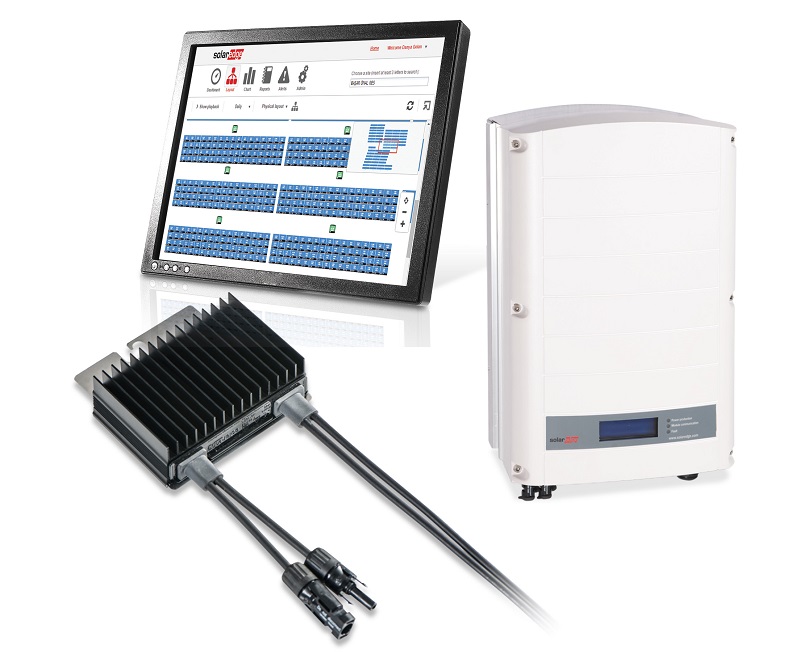SolarEdge, the Israel-headquartered inverter and DC optimizer specialist, will ramp up its presence in the lucrative Japanese high voltage solar market in March when it launches a new three-phase, DC-optimized inverter solution via partnership with domestic company Omron.
The agreement sees SolarEdge tap Omron’s long-established distribution and sales channels to market its solution, which comprises inverters, power optimizers and module-level monitoring.
Omron’s after-sales service network extends to 140 locations across Japan, and so offers the potential for SolarEdge to gain a stronger foothold in a market that has traditionally been tough to break into for foreign firms.
As Japan’s solar sector has become more saturated and mature, the demands placed on solar installations in the country are beginning to alter. Higher voltage components are growing in popularity, and the prevalence of small utility and large commercial arrays being built in less-than-optimal, ie, shaded or hilly locations, is expanding. These factors play into the hands of a three-phase, optimized solution such as that offered by SolarEdge.
Despite enjoying good success in the optimizer space in Japan over the past few years, SolarEdge has found entry to the three-phase inverter market more difficult due to the presence of strong domestic competition in the form of Tabuchi, Yaskawa and Omron.
The benefits to SolarEdge of this partnership appear obvious: Omron is, according to IHS Markit data, Japan’s largest PV inverter supplier, so by partnering with such a strong brand SolarEdge will certainly enjoy an image boost.
“This partnership will also allow SolarEdge to defend its position in a market in which non-Japanese suppliers are continuing to expand,” IHS Markit senior solar analyst Cormac Gilligan told pv magazine. “For example, SMA is growing there and has a power optimizer solution via Tigo, and Huawei will expand its portfolio with a power optimizer solution too.” Taiwan’s Delta has already established itself in Japan, Gilligan added.
The benefits to Omron include the fact that the Japanese company only sells a limited quantity of three-phase inverters domestically, focusing more on single-phase, explained Gilligan.
“While Omron does ship single-phase inverters to the sizeable <50kW (small commercial) installation market in Japan, there is a growing trend to start using three-phase string inverters such as 25 kW, which SolarEdge offers,” he said. “This will enable Omron to address the huge small commercial market, which IHS Markit forecasts to be 1.8 GW in 2018, making it the largest segment in Japan.”
As PV inverter prices have continued to decrease in Japan, mirroring global trends, and as residential market growth has slowed, local PV inverters suppliers are striving to add new sales opportunities to their business.
By working closely with SolarEdge on this solution, Omron does not need to step up its R&D efforts to plug this growing gap in the market, and instead will profit-share with SolarEdge, suggested Gilligan. “The market in Japan does favor premium high-quality and is open to new technology, so being able to offer MLPE such as power optimizers and assist customers with higher energy yields via combating shading and roof alignment constraints will be a good method of maintaining or growing market share in what is still a crowded space.”
This content is protected by copyright and may not be reused. If you want to cooperate with us and would like to reuse some of our content, please contact: editors@pv-magazine.com.



By submitting this form you agree to pv magazine using your data for the purposes of publishing your comment.
Your personal data will only be disclosed or otherwise transmitted to third parties for the purposes of spam filtering or if this is necessary for technical maintenance of the website. Any other transfer to third parties will not take place unless this is justified on the basis of applicable data protection regulations or if pv magazine is legally obliged to do so.
You may revoke this consent at any time with effect for the future, in which case your personal data will be deleted immediately. Otherwise, your data will be deleted if pv magazine has processed your request or the purpose of data storage is fulfilled.
Further information on data privacy can be found in our Data Protection Policy.